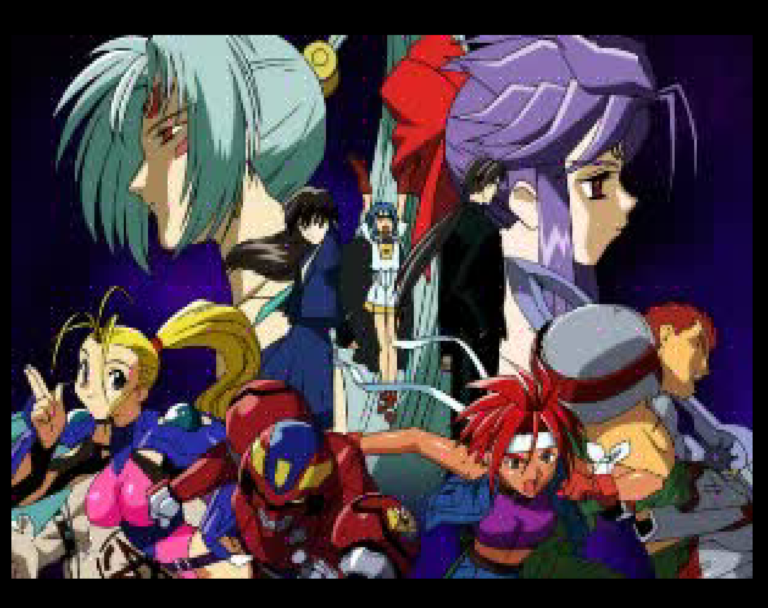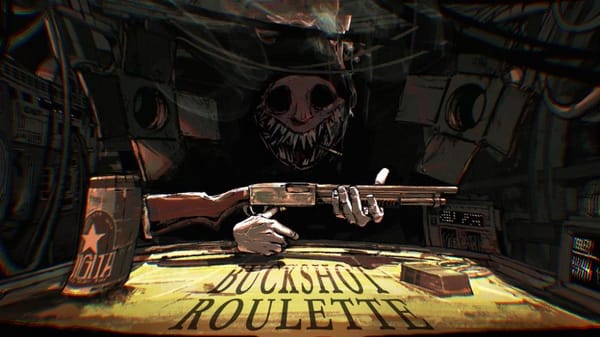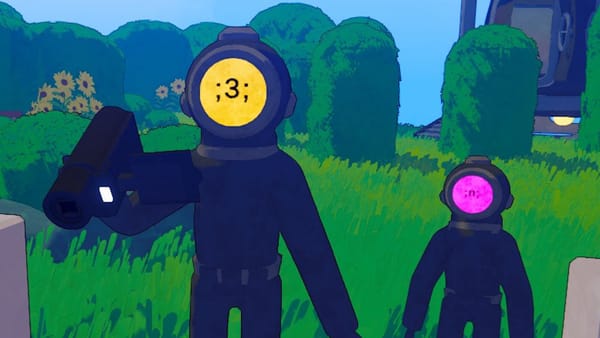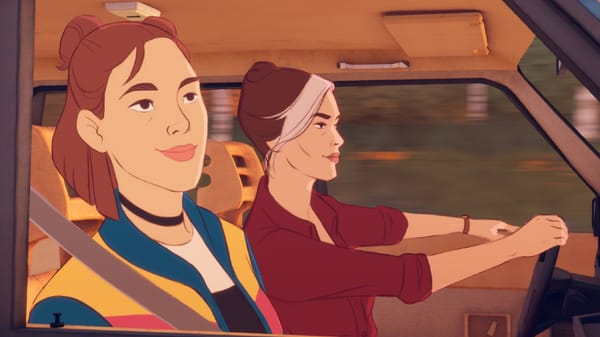The foreshadowing of Evil Zone - LudoLudo Dissonance

Written by Rinoa Carmichael
After a long and if not successful, odd, marketing campaign, EA’s Dante’s Inferno was finally released in early 2010. A few months later to zero fanfare whatsoever, Yoko Taro’s NieR would release. Dante’s Inferno was considered to be fine, maybe even good? NieR was panned by critics as a clunky mess that was outdated.
Yet I am willing to bet that you forgot Dante’s Inferno even existed until reading this very piece. And that clunky mess that was panned by critics just got a fancy remaster that has dominated the games press for the past few weeks.

Stories like this are common in games, the ongoing legacy can never be predicted at the time of any game’s release, and so while this is, in theory, a game design column, it was foolish of me to not realize it would be inherently a retro column too. I think looking at games from past generations is inherently more interesting than new games which we do not know the legacy of. As we have the chance to see which survived the test of time, and which faded away into obscurity.
In 2010, no one would have believed a NieR remaster would be a thing people were excited for. How we look at games now has changed, just as much as games themselves have. But now many more people are ready and primed for the kind of things NieR did. I want to talk today about a game in a similar position, where the audience wasn’t primed for it, but will likely never get the same chance NieR did.

Evil Zone, (stylized EVIL ZNE in PAL regions) was released on January 14th, 1999. A single screenshot allows anyone to calculate the exact day of release from the character designs alone. Despite that though, it was ahead of its time in many ways, as a 3D fighter with simple controls for everyone for the time, a unique amount of effort was put into the narrative. Only a week later, on the 21st, would another simple for everyone fighting game come out, Smash Brothers.

Evil Zone had a gimmick. Fighting games had become too hard, they said. Tekken characters have over a hundred moves! Street Fighter characters have scary motions. King of Fighters had a pretzel??? Too difficult for a mortal to bother with. So Evil Zone is a game that needs only 2 buttons, attack and guard, and a dpad, using even fewer buttons than Smash Brothers. But unlike Smash, Evil Zone wanted to keep to the form of a fighting game, stages were purely aesthetics, it’s 1v1, life bars on each side of the screen, supers meters, and so on.

In many ways, Evil Zone would be an early example of what we might now call the accessible fighter sub-genre alongside modern examples like Pocket Rumble (2016)and Fantasy Strike (2017). But at the time this really wasn’t a concept, we didn’t have a legion of people saying “motions make fighters too difficult” as we were in the tail end of an era where difficulty was a selling point of fighting games. As such Evil Zone was not released to an audience with the framing to take on board what it was going for.

If you look at Evil Zone like a Street Fighter or Tekken there isn’t much there. Especially since a large part of the appeal of those games at the time was the difficulty of learning. It was a mark of skill to “know all the moves.” Smash would receive much the same critique at the time, but this was greatly mitigated by having Nintendo characters, being four-player, and being a much sillier, lighter affair that was clearly trying to be its own thing rather than a part of the core fighting game genre.
But, let’s actually talk about the game itself. Evil Zone as you’ve probably picked up in the screenshots, looks like a fairly typical 3D fighter but maybe more anime and with a more dynamic camera. Compared to the Soul Blades or Virtua Fighters of the time, there was a huge focus on projectiles and distance, with each character having multiple projectiles with differing purposes, and the ability to augment them to counter a side step. Throws remarkably have infinite range to make the classic attack/block/grab rock paper scissors dynamic work at these distances. (and unique distant animations to have them make sense)

While most characters share a lot of moves in a broad sense, a lot of the specifics vary, and so every character has a range they tend to play best in, which is ultimately what a lot of fighting games come down to, keeping people in your optimal range, out of theirs. A small range of tools with clear purpose helps you quickly understand what a character’s goals are in a match once you understand all the different ways to press attack. This makes Evil Zone a surprisingly readable game with only a short amount of play.
One of the ways developers from the seventh generation of consoles tried to make their fighters more accessible was to have comeback mechanics, bars that fill up as you took damage, a once-per-match buff that was stronger the worse off you were, all sorts of things. For a while, the comeback mechanic of a fighter was one of the defining features. Comeback mechanics are often derided by serious players for many reasons outside of just “I hate losing to them” but I think there is some value to something that prevents matches from becoming one-sided.

Evil Zone, with its anime stylings and ever-shifting camera, wants to emphasize the drama of a fight and is a strong early example of a great and, honestly, incredibly elegant comeback mechanic. You may have noticed the yellow in the lifebars, this is something you can charge up, and often the time to do so is your reward for knocking someone down for a moment. When the yellow hits the top of your lifebar you get a power crystal which you can use to either empower a particular special move you have, or use the universal super input back back attack to use your super. The fact that the lifebar is used as a super meter cap I think is an all-time great design choice. As the comeback mechanics then are equally present through the whole match, and it’s just a natural consequence that you would get super quicker the lower your health is.
This creates some really neat moments, maybe you had your meter mostly filled, take a bad attack, and now have the power to lay in the final blow? Maybe your opponent is on a sliver of life, and so able to constantly throw empowered attacks at you since with just a pixel of life, even at 224p, they can charge up the maximum stocks in just a moment.

And it’s not unlikely that you will end some matches with that “magic pixel,” since the game has no “chip death” as it is called in fighting games. “Chip death” is where you can die from taking the small slivers of damage many fighting games have to discourage too much blocking. But a number require that final hit to be a “real” unblocked hit. This combines with the comeback mechanic to ensure that generally most losses feel remarkably fair.
So, Evil Zone is super forward-thinking right? Simple inputs, but maintaining a large amount of the things that fighters strive for, a great comeback mechanic that keeps things fair, what more could it be doing to feel ahead of its time? Story.

Now, the story is actually pretty typical, a number of fighters summoned to fight an evil now fighting each other. But with a lot of in-engine scenes to give context, however poor, for each match made Evil Zone rather a rarity at the time. On top of that, you might have noticed each character is somewhat generic and tropey, which is correct!


Each of their story modes frames them as a star of their own TV show, with each show belonging to a different genre of Japanese TV. The production values are a lot of fun, with simple eye catches and original theme songs. In many ways, there isn’t much to say here, but at the time it still wasn’t common for fighting game stories to be much more than a short setup and ending video. Here is the entirety of Xiouyu’s story in Tekken 3 for instance.
In much the same way that comeback mechanics would become a trend, we saw in the 7th and 8th generation especially a huge push on story modes. BlazeBlue had so much story presented in a visual novel style to the point there is a pair of visual novels based on it! NeatherRealm studios would also change the game with Mortal Kombat and Injustice to the point that other major fighting game developers like Capcom and ArcSystem Works would change how they presented the stories in their games.

While Evil Zone is certainly an early step on the path we can see even at this point there was value being placed on this sort of thing. Engaging single-player modes provide a safe space to tinker with characters and become comfortable with systems before delving into the intensity of “real matches.” It was certainly one of the major things to sell the game on and something that it is fondly remembered for.
Evil Zone today still feels unique and distinct as a mechanical piece of work, and holds up exceptionally well for a PS1 casual fighting game through it’s smart design, even if by today’s standards the storytelling is simple. I think anyone interested in fighting games and their history will find a game here that is both extremely of its time, and so far ahead of it too.



